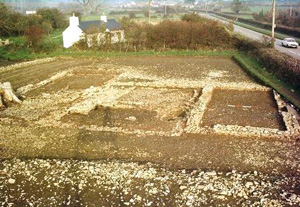 1978
1978
Cosmeston Lakes Country Park and Medieval Village has been in the ownership of the Vale of Glamorgan Council since 1978.
It was during the development of Cosmeston Lakes Country Park in 1978 that excavation work undertaken by Glamorgan-Gwent Archaeological Trust revealed the remains of 13th-14th century stone buildings which led to a long term research programme being commissioned.
The Trust uncovered the remains of a community over 600 years old, and so began a unique archaeological project to restore the medieval village of Cosmeston. The importance of the medieval village at Cosmeston lies in its scale as most other excavations have been limited in both size and duration.
At Cosmeston the archaeologists have had the opportunity to excavate over long periods of time and these excavations have led to the full-scale reconstruction of a medieval village on its original site and foundations. The excavations have been interpreted and presented by archaeologists and the Vale of Glamorgan Council to provide an authentic picture of the settlement discovered at Cosmeston.
Painstaking excavation work revealed the remains of foundations that have lain buried for hundreds of years, where there once stood a flourishing community. The excavations also discovered interesting finds these included, a metal knife, quantities of medieval pottery and animal bone and two prehistoric quern (grinding) stones.
The demesne was a part of the manorial lands supplying the lord with many of his luxuries. At Cosmeston, this land contained an orchard, fishponds and a dovecote. The excavated remains of the dovecote are located in the field west of the village across the mile road.